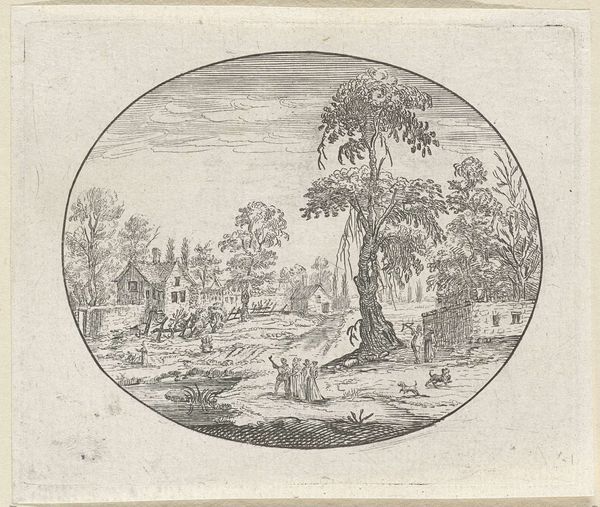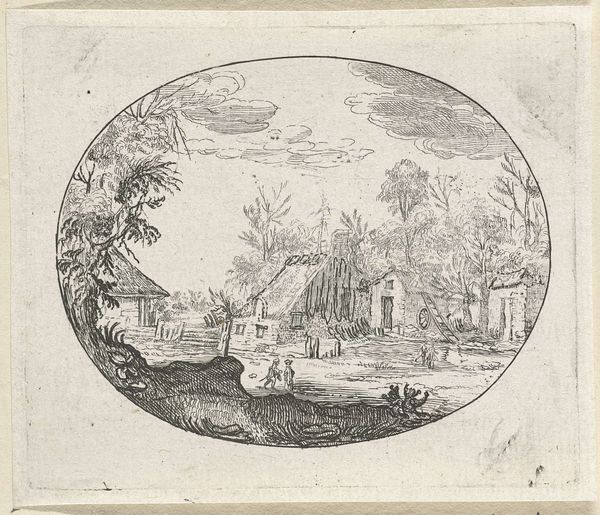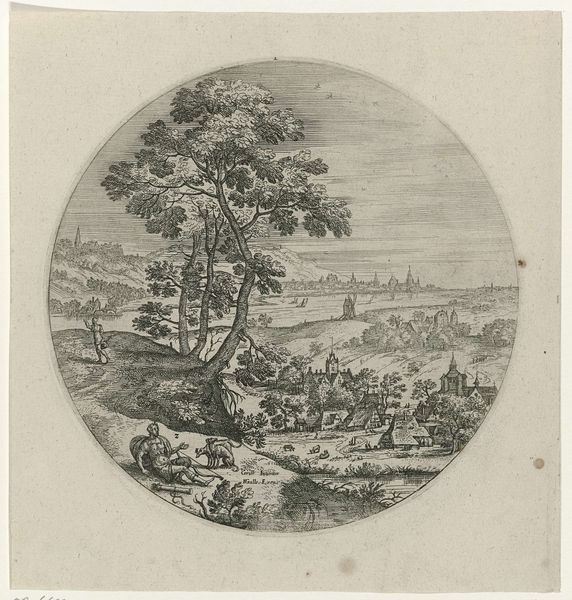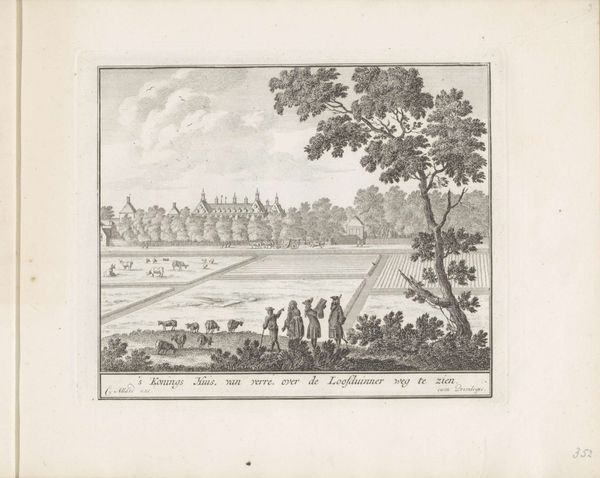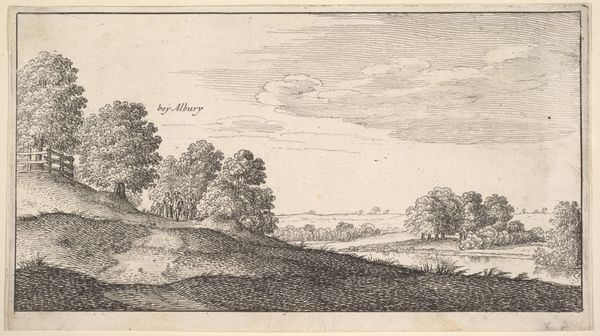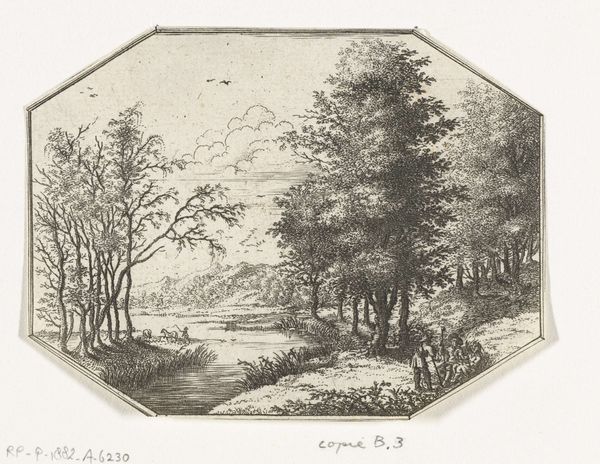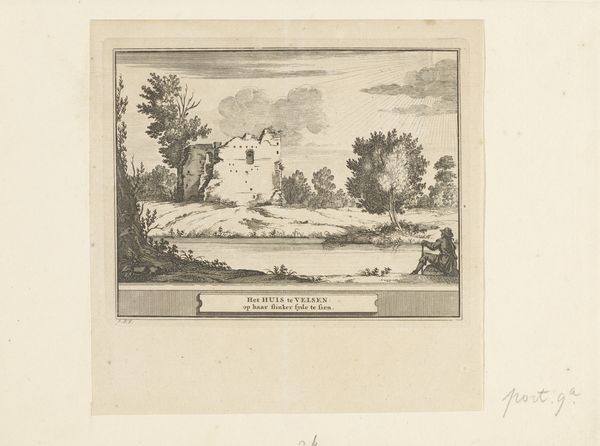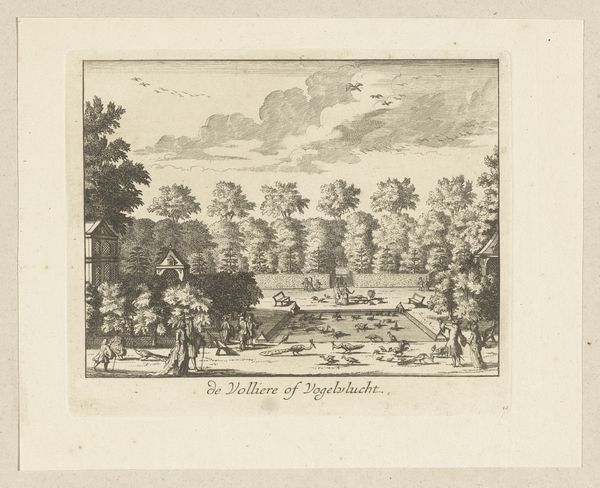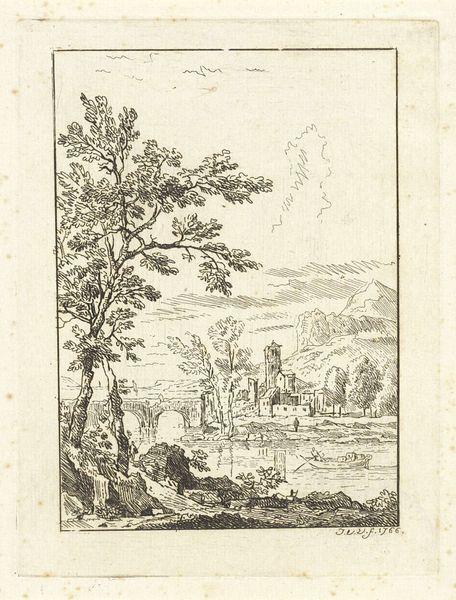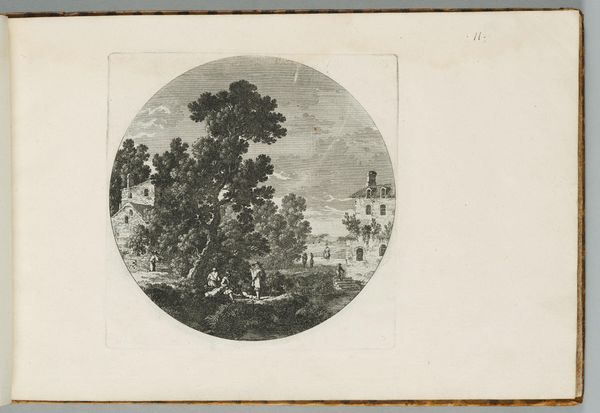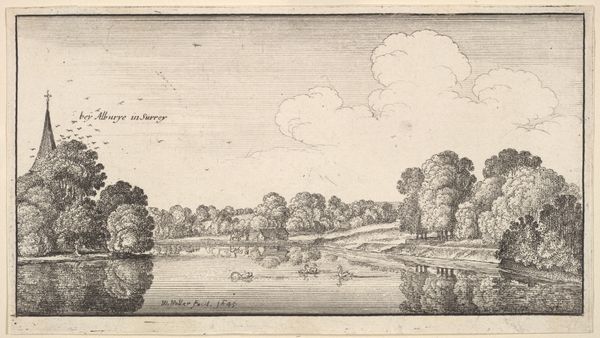
print, etching
#
dutch-golden-age
# print
#
etching
#
landscape
#
line
Dimensions: height 75 mm, width 88 mm
Copyright: Rijks Museum: Open Domain
Curator: Immediately, I find myself drawn into the detailed lines of this etching. There's an undeniable stillness about the scene. Editor: It's a landscape, rendered by Charles de Hooch, titled "Landscape with a Stone Bridge," likely created sometime between 1613 and 1638. A very picturesque piece. The oval framing gives it an intimate, almost secret view. Curator: Yes, like peering through a looking glass into a bygone era. The bridge, front and center, seems to represent transition, a crossing from one state to another. Editor: Bridges often do. This one in particular has symbolic resonance in Dutch Golden Age art. It could be seen as a representation of humanity's mastery over nature. This little country and it’s many water ways. Curator: That’s a perspective I appreciate. Look at the buildings on the horizon – the suggestion of a town, a community, but separated by water. The bridge is the only direct connection. And the arch of the bridge repeats in the curvature of the clouds above. Editor: True. In its period, this image provided accessible art for those who could not purchase paintings. Prints served an important social role in making art available beyond elite patrons. It's small format invited close examination by an eager public. Curator: Do you think there’s a certain universal quality in the artist’s rendition of light? Notice how the foreground is deeply shaded, and as we gaze back, it progressively brightens toward the horizon? Editor: A definite play of light and shadow guides our eye, a technique popular at the time. These rural settings offered citizens idealized scenes, far from crowded, complex urban spaces. And consider that this art was circulating as the Eighty Years' War ground to a halt – landscapes offered viewers images of calm prosperity they surely sought. Curator: That contrast is very true. To our contemporary eyes, such idealized landscapes can risk appearing romantic, even naive, if taken out of context. Understanding it as aspirational helps deepen the emotional impact. Editor: And considering its original medium, its creation, duplication, distribution within a rapidly changing cultural environment, allows one to read it as part of a broad-scale project of shaping public desire. Curator: The artwork becomes an icon that reflects not just individual mastery but a collective hope. Thanks to it, one gets a glimpse not only into a landscape but into the cultural moment. Editor: Precisely. I now look upon this scene as so much more. A print, it now offers a window into a fascinating and dynamic society.
Comments
No comments
Be the first to comment and join the conversation on the ultimate creative platform.
